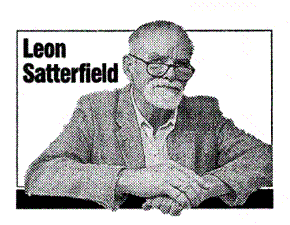WWII ended 50 years ago today, and Iíd like to join the others writing about it. But I may be having the same trouble Jim Corder had in his tentative memoir, "Chronicle of a Small Town":
"What I saw, I often saw wrong, and then misremembered."
Hereís what I think I remember:
On August 14, 1945, I am 11 years old and I am in my fatherís 1939 Buick with my parents and three sisters. We are in downtown Denver when news of the Japanese surrender comes.
Immediately our car is surrounded by jubilation, much of it from soldiers and sailors whoíve only now found out they donít have to die just yet. They are kissing every girl they see. The girls appear not to mind.
There is easy access to strong drink.
The crowd further confounds traffic by disconnecting the electric trolleys from their overhead power lines. Sparks snap and blue smoke puffs. Trolley conductors use long poles to reconnect to the overhead lines—so celebrants can disconnect them again.
There is a bonfire in the middle of the street. Anything combustible gets thrown in.
And hereís my most vivid memory, the recurrent image—in slow motion and fuzzy at the edges—I always equate with the end of the war:
A woman takes off her underdrawers and throws them into the fire.
Iím a Baptist from a small town in Kansas. Itís the first time Iíve seen a woman throw her underdrawers into a fire. It makes a lasting impression.
But now, at 61, I find her act bizarre enough that I doubt myself. I get on the phone to my sister and ask what she remembers of V-J Day.
Mainly the easy access to strong drink. Sheís Baptist. And paper—confetti and bigger pieces—thrown out of windows of tall buildings. Honking horns and stalled trolleys and something about a fire in the street.
Anything about a woman throwing her underwear into the fire?
All that my sisterís Boolean combination of WWII and underwear dredges up is the memory that after Pearl Harbor they stopped putting elastic in unmentionables, which is how Grandma Bray referred to what fell around her feet in downtown San Bernardino in 1943. She stepped out of them and put them in her purse, not mentioning them at all.
I donít remember that—casting further doubt on my powers of recall.
I go to a library that has microfilmed back issues of the Denver Post, to see how the V-J Day celebration was reported. Iím mostly reassured.
The Post estimated a crowd of 2,000 to 3,000 formed almost spontaneously at 17th and Broadway, and later grew to 50,000. "Great noisy male clumps shouted to, laughed with, and kissed whatever girls were handy." There was dancing in the streets, trolley connections disconnected, and strong drink: "It didnít take long for many to get drunk; most were drunk to begin with from an elixir stronger than any liquor."
|

The Truth, Mainly
So far, so good. About the way I remember it.
Then I get to the fire: "Celebrating soldiers and civilians started a bonfire with the contents of trash cans." "Some of the more enthusiastic men" threw their shirts in the fire.
Now, I think, comes the climactic act of WWII, the part about the woman and her underwear.
But all the Post reports is that "many women added their handkerchiefs to the blaze."
Handkerchiefs?
I reread the story. Nothing about my archetypal memory of a woman in the throes of wild abandon—derived from an elixir stronger than any liquor—offering her underwear to this funeral pyre for the death of WWII.
Is it possible that I saw it wrong, then misremembered what I saw?
Maybe. Or maybe a fastidious copy editor changed "underdrawers" to "handkerchiefs" to protect the delicate sensibilities of Denver readers.
Or maybe my father, who was given to ribaldry, saw a woman throw her handkerchief in the fire and, knowing it would titillate his Baptist family, said, "I believe that woman just threw her underdrawers in the fire."
Or maybe I came home to Kansas and told the story to my Sunday School classmates to titillate them with the wickedness of big city life, and maybe I embellished. Maybe I told the story so often I came to believe it.
But I donít think so. I still swear itís a true story—even though in my heart of hearts a hint of doubt creeps in.
Thereís probably some meta-truth buried in all this, some truth about the elusive nature of truth, but I get headaches thinking about it.
Still there are three things I know I know:
•The story of the woman and her underwear is too fraught with mythic significance not to be true, whether it happened or not.
•People tend to celebrate when they discover they donít have to die just yet. Because no man is an island, such celebration is contagious.
•WWII ended 50 years ago today.
Leon Satterfield is a Lincoln English professor.
His column appears on alternate Mondays.
|